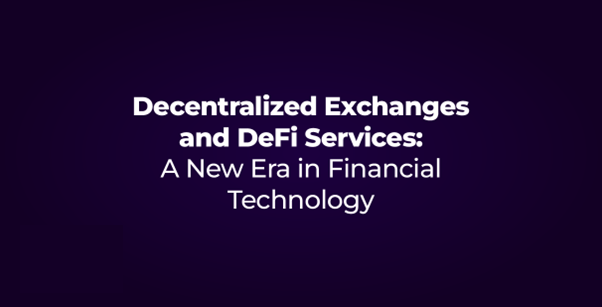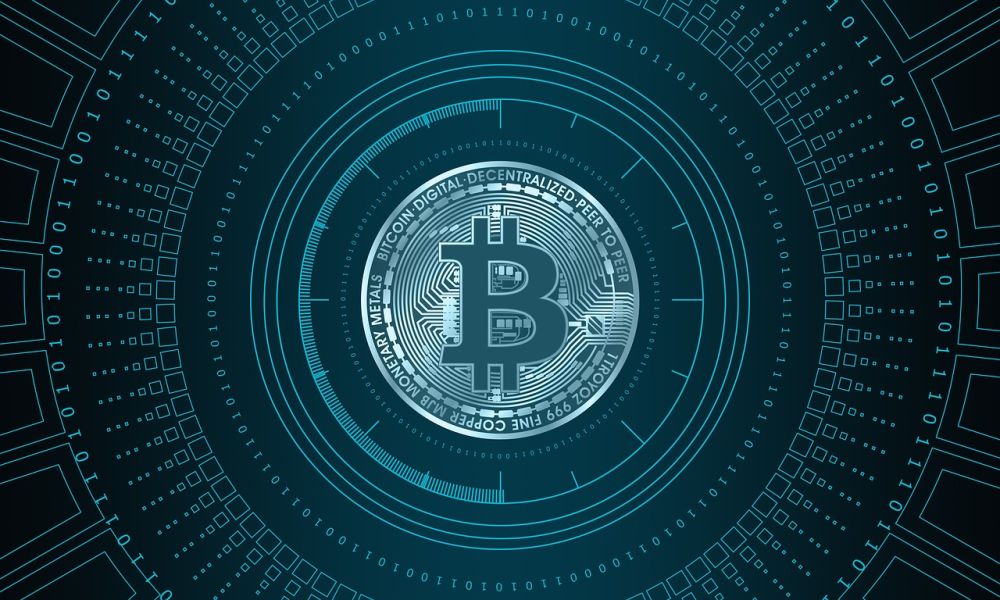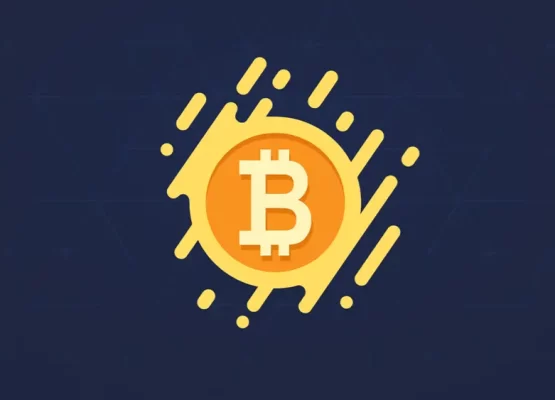Since the evolution of humanity, money has undergone significant changes based on the financial needs of the era. It has evolved from the barter system and gold coins of ancient times to modern-era fiat currency. With the rise of DeFi, we have entered an exciting time where its value doesn’t solely depend on physical attributes but on programs written by geeks.
DeFi, based on smart contracts and distributed and immutable ledger, has made it possible to create a decentralized financial architecture, empowering people to shed off highly centralized and controlled financial systems.
The explosion in the volume of cryptocurrency tokens and an increasing number of decentralized exchanges have started institutions to take it seriously. Institutions also benefit from it since it impacts peer-to-peer interactions, allowing them to launch innovative products faster.
This post aims to provide a meaningful and insightful overview of DEX and DeFi services.
The Rise of DeFi: Building Blocks, Stack, Growth
DeFi takes advantage of various technologies developed in the blockchain space. Since its inception, DeFi has witnessed tremendous growth in trading volume, use cases, institutional interest, and product launches.
- $55 billion is the total market capitalization of DeFi, as per the DeFi Lama
- According to Statista, the total TVL of DeFi witnessed a 12X surge from July 2020 to November 2023
- According to a JP Morgan report on DeFi, 91% of financial institutions expressed interest in investing in tokenized assets.
Experts also seem enthusiastic about the prospects of DeFi. Mukaya Panich, chief venture and investment officer at SCB 10X, gives a thumbs-up to decentralized finance.
He says,”Whatever traditional finance has, there’s a parallel version in DeFi — credit lending, trading, derivatives, asset management, insurance, and so on.”
According to a Goldman Sachs report, DeFi, though it’s a work-in-progress, has clear advantages over traditional finance. For instance, it provides easier access to finances for the underbanked population.
Building Blocks of DeFi
DeFi is a complex technology involving multiple layers and components. Some key building blocks of DeFi are:
- Blockchain: Open source, decentralized, and immutable protocol
- Digital Assets: Tokens reflecting the value
- Wallets: Offers users exclusive control of their token assets using private keys.
- Smart Contracts: Self-executing rules to facilitate blockchain transactions
- dApps: Applications built on blockchain protocol
- DAO: Entities with corporate governance rules defined on smart contracts
- Oracles: Data feed taking data off the blockchain system
Understanding Decentralized Exchanges(DEX)
Decentralized crypto exchanges, aka DEX, are trading platforms for buying and selling tokenized DeFi assets. Unlike traditional trading platforms, they don’t use intermediaries like a broker. Everything is facilitated through automated smart contracts algorithms. They have emerged as a self-custodial platform that allows users to trade without an intermediary, saving on brokerages and other transaction costs.
Technology Driving Decentralized Exchanges
As DEX works without involving intermediaries and facilitates trading in a different way, it uses a different technology than traditional trading platforms. Examples of such technology include:
- Blockchain: DEX uses a blockchain network to operate.
- Smart Contracts: DEXs use self-executing codes that run on the top of the blockchain platform.
- Nodes: DEX uses various nodes in the network to identify, verify, and validate transactions on the platform.
- Order Books: When users place buy or sell orders, DEX uses Order Books to facilitate trades. The Order Book uses automated algorithms to match these buyers and sellers based on the price and quantity of entered orders.
- Liquidity Pools: The concept of liquidity pools is crucial to understand as it is the core of automated market makers or AMMs algorithms. Instead of finding a buyer or seller, various investors contribute their tokens in a liquidity pool where they’re automatically traded without finding another party who wants to trade with them.
- Automated Market Makers: AMMs are software codes that automatically adjust the tokens’ price based on supply and demand, ensuring traders always receive the best price.
Benefits of DEX
Decentralized Exchanges have some natural advantages over traditional exchanges.
- Increased Security: The custodial nature of centralized exchanges(CEX)is often cited as the main reason why they are the target of hacker groups. They pool users’ funds with them, making them vulnerable to malicious actors. That’s not the case with DEX. Users participating in trading on DEX platforms keep their money in private wallets.
- Greater Privacy: To participate in DEX, users don’t need to reveal their identities through extensive KYC processes.
- Lower Fee: Since users don’t need to pay for brokerage and many other intermediary-related It allows customers and businesses to transact at low costs.
- More Control: Since no centralized authority exists in DEX, users have greater control. Things like blocking of withdrawal rarely happen in DEX.
Demystifying DeFi Services
The purpose of DeFi services is to allow every user to consume financial services regardless of their financial status or any other inhibiting factor. For example, a large swathe of people in many countries are unbanked.
DeFi services are inclusive in nature, or they provide equal treatment to users, empowering users to conduct many financial activities that are difficult to imagine in traditional finance. On the other hand, businesses can launch low-cost innovative financial products faster. Many industry leaders echo the same view.
Hendrith Vanlon Smith Jr, CEO of Mayflower-Plymouth, says,” DeFi and traditional banking will experience a kind of hybridization or a blending together that will hugely impact global economic growth.” A list of popular DeFi services includes:
- Open Lending Platforms
Open lending platforms are the simplest example of DeFi services that allow users to lend their digital assets to earn interest from their holding.
- Stablecoins
Stablecoins are pegged to USD or Euro to tackle volatility in the crypto space. Due to stability, they are popular in the DeFi space, especially among borrowers and traders.
- Decentralized Insurance
Understanding the obscure fine print in insurance policies is a challenge for buyers. A range of DeFi platforms like Nexus Mutual offer insurance against unfortunate events. These policies are designed using smart contracts, and the premium is shared among investors.
- Staking
Staking is a simple DeFi use case that allows token holders to participate in network governance using Proof-of-Stake (POS) based blockchains.
- Yield Farming
Yield farming is used to stake or lend assets on DeFI platforms in lieu of rewards. For instance, a user could deposit tokens into a liquidity pool to facilitate trading and users are shared the fees for participating in the liquidity pool.
Top DeFi Platforms
With the increasing popularity of DeFi services, many DeFi platforms have emerged to meet particular use cases.
Here is a list of a few popular platforms in the below graphics:
6 Popular DeFi Platforms:
- Uniswap
Allows to swap, earn, and build on decentralized protocols without intermediaries.
- Aave
Enables borrowers to receive loans using tokens as collateral
- Compound
Provides users to earn interest on their deposits
- Curve Finance
Enables users to exchange stablecoins with low slippage.
- Yearn Finance
Acts as a yield aggregator that automatically allocates users’ funds in various protocols to maximize returns
- Balancer
Provides liquidity pools for the purpose of token swaps
DeFi Adoption: Key Challenges And Risks to Consider
Though DeFi promises to revolutionize the traditional financial sector, it needs to deal with many challenges related to transparency, security, regulation, and scalability. Since it is currently unregulated and lacks proper safeguards, this is a magnet for scamsters. According to Elliptic research, $10 billion was lost in 2021 owing to various DeFi scams.
Security, speed, and scalability are other issues with DeFi that prevent it from large-scale public adoption. The current public blockchain infrastructure is not fully equipped to deal with the massive data volume of traditional finance. For example, their transaction processing speed is nowhere comparable to conventional finance.
Another problem with DeFi is the lack of sufficient liquidity. It often causes price volatility, slippages, and long squeezes. Furthermore, there is skepticism among governments worldwide, resulting in a regulatory-level lack of clarity.
Moreover, there is little or no guidance on how DeFi transactions should be taxed, making it susceptible to tax avoidance.
A McKinsey report states, “there are jurisdictional consistencies—about classifying these assets, services, and governance models in various countries, limiting the potential for institutional adoption.”
The Future of Decentralized Finance
The future of DeFi holds promise for reshaping the financial landscape by providing accessible, transparent, and inclusive financial services. As the technology matures and innovators continue to push the boundaries, we can anticipate the evolution of DeFi beyond its current state.
Conclusion
Adopting a new thing is always not easy, and DeFi is no exception to this rule. Though there are concerns and risks surrounding decentralized finance, these concerns will slowly ebb as institutional adoption grows and organizations learn to engage with DeFi. And even if they are not moving into the adoption phase, bringing this into strategic business purview will help.
It is essential to understand that we are on the cusp of innovation in traditional finance, and exciting things are unfolding. Being at the forefront of this grand shift is critical to their growth and positioning in the industry.
If you are seeking the ideal partner to launch your DeFi project, look no further. We provide comprehensive Web3 solutions designed to bring your project to fruition. Prepare to launch your DeFi project with confidence, knowing that our end-to-end services will support you every step of the way.
We’d love to hear your views on whether you believe decentralized finance will reshape the contours of the financial system. Let’s know what you think.




